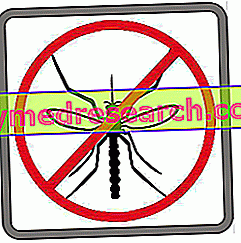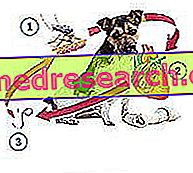Even cats, like dogs, have milk teeth like humans. This is the typical deciduous denture that accompanies the childhood of the animal before leaving space for the final dentition. Cats are born without teeth and see canines and incisors appear first, around the third week of life. The definitive dentition replaces the deciduous one between 4 and 7 months of age
Category veterinary medicine
Basis of the Feline Diet The cat's body has very different nutritional needs than the human body. For this reason, his diet must be specific and adequate. Statistically speaking, most domestic cats do NOT follow a balanced diet. The most common errors concern: Excess carbohydrates. Water shortage
What is Diabetes? The term diabetes is defined as a morbid (pathological) condition, characterized by alterations of the water exchange, which occur with an excessive intake of liquids and an increased elimination of urine. The clinical pictures included under the term of diabetes are basically represented by: diabetes mellitus , which is diabetes proper, due to a deficiency or impaired function of insulin; diabetes insipidus , caused by a deficient or altered function of the anti-diuretic hormone (ADH); steroid diabetes , given by hyper-production of glucocorticoids (cortisol), caused by a dis
In most cases, dogs suffering from diabetes mellitus are affected by the insulin-dependent form (IDDM, Insulin-Dependent Diabetis Mellitus ), meaning they need insulin therapy for life. Cats, on the other hand, are mainly affected by non-insulin-dependent diabetes mellitus (see below). Causes and Risk Factors Diabetes appears to affect female dogs twice as often as males
Which Food Check? Generally speaking, any wet food is better than dry food. This is because it has: Greater water content. A lower carbohydrate content. Higher animal protein content. Domestic felines that feed exclusively on croquettes are potentially at risk of diseases affecting the urinary tract, intestines, metabolism, etc
Homemade diet In some people, feeding your cat with raw meat can trigger an uncontrollable "repulsion". Some think it's not hygienic, proving to treat the feline as a human. This is a rather gross underestimation (which the animal would not like). Others speculate that letting your cat eat raw meat or allow it to hunt are circumstances that can "incact" the animal
Introduction Nutrition is the fundamental basis for maintaining the health of each form of animal life. This short article will focus on the basic principles of the domestic feline diet. Cats that eat meat (canned or fresh) are longer-lived and become less sick than those that are fed with dry food. By changing the cat's diet it is possible: Optimize the quality of life of the animal
Preventive Treatment A safe and effective method to prevent the dog from getting sick with Filaria is to constantly treat the animal with substances that do not allow the development of the adult parasite. This " microfilaricidal therapy " is not a vaccination, but a treatment on the infested host (dog) against the larval forms L3 and L4 of Filaria, to prevent these becoming adult and causing the disease
Gravity of the Philharmonic Cat Generally, heartworm disease affects cats with a prevalence of 20% less than dogs. Furthermore, Filaria-infested cats have fewer adult parasites than those found in dogs. This occurs because, in the feline species, the parasites, in addition to having a longer maturation time (they become adult breeders at the 8th-9th month, compared to the 6th in the dog), have a smaller number of infecting larvae ( L3) that reaches sexual maturity and finally because their average life in the definitive host is of short duration, up to a maximum of 24-30 months
Risk factors The cardiopulmonary filariosis in the dog does not seem to have a predilection of age or race; however it seems that male dogs are more frequently affected than females. Of course, large dogs that are generally used to living outdoors are more at risk than small dogs that live in the house
What is the BARF Diet? The BARF (or barf) diet is a diet designed by Dr. Ian Billinghurst for feeding some domestic animals, including dogs, cats and ferrets (the latter two, obliged carnivores). Barf is the acronym of the English word Bones And Raw Food (bones and raw food), invented by Debra Tripp











